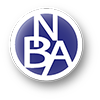Excellent. There is no braille provision for pictograph characters such as these. Braille systems for Chinese and other pictograph languages are built on a transliteration of that language into the Latin alphabet, which I believe in Chinese is called pinyin. That is not what we have here.
Treat each of the Chinese characters as a little picture, which is what the text does itself. You could transcribe the chart on page 88 with a TN that explains that the chart shows Chinese characters and pictures for the following words, and list the words. For the story, use the new embedded TN given in section 3.2.3 of the new guidelines. I would start each story (if there are more of them) with a TN that explains that Chinese characters are used for some words in the story below. Then you won't have to repeat "Chinese character" for each each TN. The story might look like this:
[simbraille],ON TOP (A ,'M.TA9,' "! LIV$ A ,'MAN,'1 '''[/simbraille]
I think these embedded TN's are very helpful.
--Joanna
